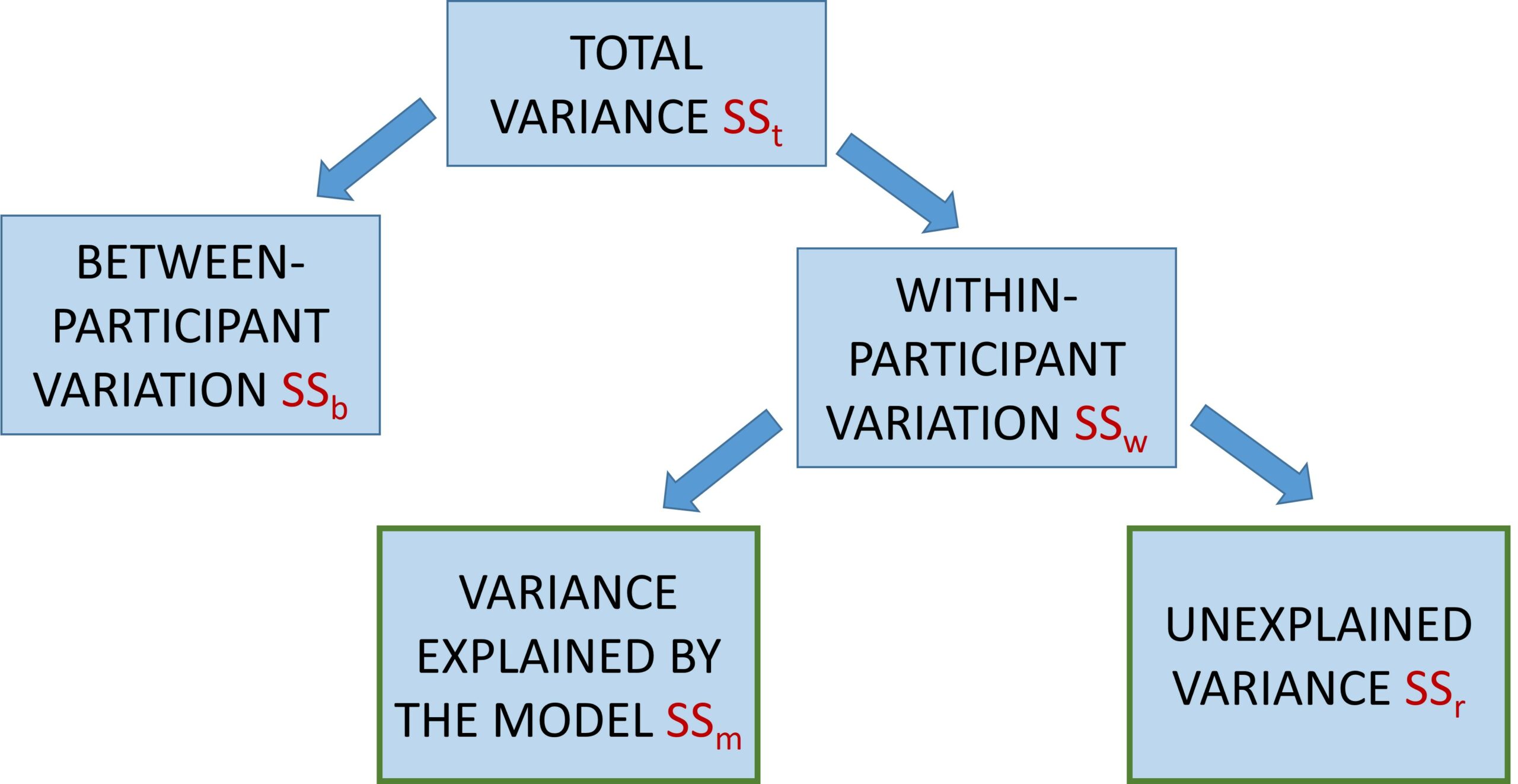26 Theory of One-Way Repeated Measures ANOVA
MSm and MSr are computed slightly differently from in the one-way ANOVA (between-subjects). Specifically, the variance is partitioned as follows:

Within-participant variation is decomposed into two types of variance. Our experimental effect (our model sum of squares – variance explained by the model) is now part of the within-participant variation, because all participants complete all conditions in the experiment. So, some of the variability within participants is due to our manipulation of the independent variable (SSm) and some of it is due to random variation within participants over the levels of the independent variable (SSr – “error”).
Without getting into the calculations for each of these types of variance, they can be described as follows:
- SSt – variability of scores around the grand mean in the experiment
- SSw – variation of individual participant scores
- SSm – variation of level means around the grand mean
- SSr – how much variation cannot be explained by the model
The one-way repeated measures of ANOVA, like the one-way ANOVA (between-subjects) that you learned about in the previous chapter, then uses the following equation for the F-ratio (where MS = SS/df):
![]()
